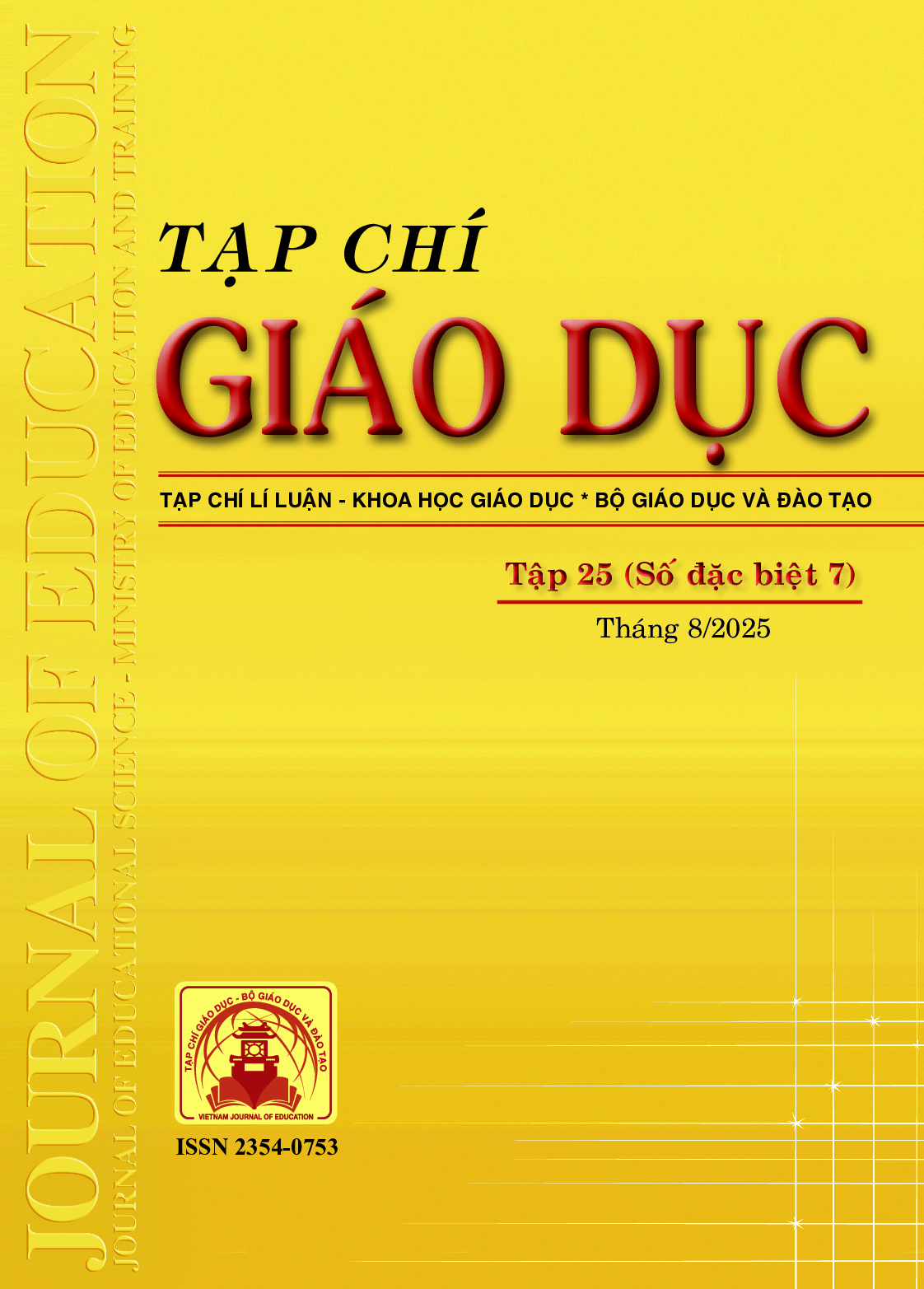Thiết kế bài học STEM trong dạy học nội dung “Ánh sáng” môn Khoa học lớp 4 theo quy trình thiết kế kĩ thuật
Tóm tắt
The topic “Light” in Grade 4 Science, under the theme “Energy”, contains practical and experiential elements that are well-suited for STEM-oriented teaching. However, many primary school teachers face challenges in designing STEM lessons due to limited experience and a lack of clear instructional models. This study aims to propose a design process for developing STEM lessons and to provide a sample lesson aligned for the topic “Light” with this approach. The study employs document analysis and curriculum content analysis methods to identify theoretical and practical foundations. The findings present a feasible sample lesson that integrates STEM elements effectively, thereby supporting teachers in improving their STEM lesson planning skills and promoting the application of STEM education in primary Science teaching.
Tài liệu tham khảo
Bộ GD-ĐT (2018). Chương trình giáo dục phổ thông môn Khoa học (ban hành kèm theo Thông tư số 32/2018/TTBGDĐT ngày 26/12/2018 của Bộ trưởng Bộ GD-ĐT).
Bộ GD-ĐT (2023a). Báo cáo Tổng kết triển khai thực hiện thí điểm giáo dục STEM cấp tiểu học theo Chương trình giáo dục phổ thông 2018.
Bộ GD-ĐT (2023b). Công văn số 909/BGDĐT-GDTH ngày 08/3/2023 hướng dẫn tổ chức hoạt động giáo dục STEM trong giáo dục Tiểu học.
Bộ GD-ĐT (2023c). Tài liệu tập huấn triển khai thực hiện giáo dục STEM cấp tiểu học tiếp cận theo Chương trình giáo dục phổ thông 2018.
Bybee, R. W. (2018). STEM education now more than ever (pp. 1-35). Arlington, VA: National Science Teachers Association.
Jolly, A. (2017). STEM by Design: Strategies and Activities for Grades 4-8. New York: Routledge, Taylor & Francis Group.
Kelley, T. R., & Knowles, J. G. (2016). A conceptual framework for integrated STEM education. International Journal of STEM education, 3(1), 11. [https://doi.org/10.1186/s40594-016-0046-z](https://doi.org/10.1186/s40594-016-0046-z)
Labov, J. B., Reid, A. H., & Yamamoto, K. R. (2010). Integrated biology and undergraduate science education: a new biology education for the twenty-first century?. CBE—Life Sciences Education, 9(1), 10-16.
National Academy of Engineering and National Research Council (2014). STEM Integration in K-12 Education: Status, Prospects, and an Agenda for Research. Washington, DC: The National Academies Press.
National Research Council (NRC) (2014). STEM Integration in K-12 Education: Status, Prospects, and an Agenda for Research. Washington, DC: The National Academies Press.
National Science Teaching Association (2025). STEM. [https://www.nsta.org/topics/stem](https://www.nsta.org/topics/stem)
Sanders, M. (2009). STEM, STEM education, STEM mania. Technology Teacher, 68(4), 20-26.
Smith, L. C. (2022). Designing a STEM class: Engineering with a Global Connection. Science Scope, 45(6), 34-39. [https://doi.org/10.1080/08872376.2022.12291486](https://doi.org/10.1080/08872376.2022.12291486)
Vũ Văn Hùng (tổng chủ biên kiêm chủ biên), Phan Thanh Hà (đồng chủ biên) (2023). Khoa học 4. NXB Giáo dục Việt Nam.
Đã Xuất bản
Cách trích dẫn
Số
Chuyên mục
Giấy phép

Tác phẩm này được cấp phép theo Ghi nhận tác giả của Creative Commons Giấy phép quốc tế 4.0 .












